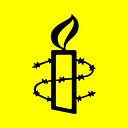Lessons on Resilience: A visit to Kakuma Refugee Camp and the Kalobeyei Settlement
By Adotei Akwei, Africa Advocacy Director
The annual giving season is in full run with save the date for fundraisers filling inboxes and holiday wish lists popping up in conversations with family and friends. For me, being with family in good health and not having to travel has become more than enough but this season brought an even richer gift following a journey to a refugee camp in north Western Kenya I just completed.
In some ways it felt like I went to another planet. Watching the lush soft green farmland and forests outside of Nairobi was like leaving Tolkien’s Middle Earth and landing in the movie The Martian. The endless rows of aluminum roofed shelters added to the look of a space settlement or a place in the middle of nowhere.
But of course, it was not nowhere and the people there are not nothing. I went to Kakuma to try and dismantle in my head the term refugees. I went to learn about what they are facing, what they want and how we could help them. Unless you have been under a rock for the last 10 years the words refugees, migrants, asylum and camps have become part of the most polarizing, misunderstood words in our everyday lexicon. They are usually linked to soul numbing statistics like 68 million displaced people globally -roughly the size of France or Africa’s 24.2 million displaced — a number that would equal the 18TH most populous country on the continent and the third most populous state in the United States. The statistics are also invariably linked to negative narratives reinforcing the perceptions that refugees and asylum seekers are good for nothing, economic parasites, opportunistic drug users and dangerous.
I went to Kakuma to learn about the challenges they face and what we, the international community and in the United States could and should do to help. In the process I gained much much more.
We interviewed women and men who given up their jobs, their homes, their lives and people who had survived harrowing journeys to find simply find a safe haven. Some had just arrived following the brutal civil war in South Sudan that exploded in 2013 and others had fled upheavals in Burundi, Rwanda, the Democratic Republic of the Congo and the collapse of Somalia. I met families who had three generations who have lived in the camp and I saw a cemetery that had reached capacity a decade ago and was no longer in use. I finally truly appreciated the term “warehousing individuals.”
But I also learned what the refugees in Kakuma camp wanted, dreamed of and wanted for themselves and their children. The mothers who had survived rape and gender-based violence and are fighting to prevent their daughters from undergoing FGM or becoming child brides. I met the youth who have set up organizations like @VoicesatKakuma to educate camp inhabitants and address concerns over health services, personal security and yes trying to increase the size of monthly food rations. I worked with a film crew of @ExileFilms, photography and video company set up and run by refugees. Are they all noble survivors? of course not, but neither are they all no good parasites demanding a handout, and some of them have visions for the continent and their countries that are no less worthy or powerful then the elected officials in their countries of origin, and they see their role in striving to achieve that vision. They each have their name and a story, their story. They have dreams for themselves and for their children and many of them are still trying to achieve some of those dreams. They are not looking to be saved, they are looking for help to save themselves.
The United States and the international community can help these people rebuild their lives and become contributors to their host countries and eventually to their countries of origin by increasing support funding for the camps, for protection, health services, education and robust livelihood programs. Warehousing people is wrong, and it is not sustainable.
So, it was a gift to me to be reminded of the power of resilience and to find it in the place we are told no hope, no future, nothing of value exists. There are huge obstacles, and daunting challenges but there is also resilience, dignity and hope. In a time when so much of the world seems without hope, truly something precious.
